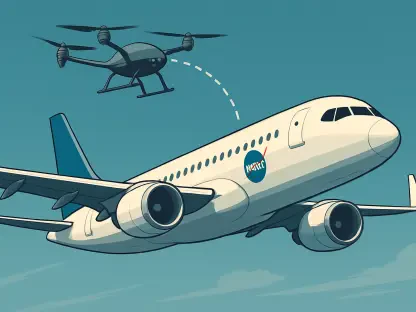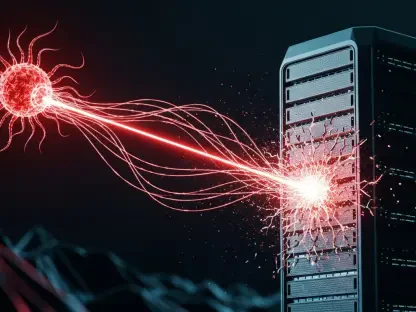What happens when a game-deciding pitch, teetering on the edge of a strike, is no longer judged by human eyes but by unblinking technology? Major League Baseball stands on the brink of this reality as it prepares to roll out the Automated Ball-Strike System (ABS), often dubbed “robot umpires,” in 2026. This seismic shift promises to transform a sport where tradition has long reigned supreme, introducing precision to the heart of every at-bat. As anticipation builds, the question looms: will this tech-driven evolution enhance fairness or strip away baseball’s human soul?
A New Era on the Diamond
The dawn of robot umpires marks a historic pivot for MLB, blending cutting-edge innovation with a game steeped in over a century of legacy. Set to debut in 2026, the ABS will redefine how balls and strikes are called, replacing the often subjective decisions of human umpires with a system rooted in data and accuracy. This isn’t merely a rule change; it’s a fundamental reshaping of baseball’s core, touching every pitch thrown and every batter faced.
Beyond the field, this transition reflects a broader cultural moment where technology reshapes even the most hallowed traditions. Fans who’ve cheered through decades of close calls and heated arguments may soon witness a game where disputes over strikes are settled in seconds by a machine. The stage is set for a transformation that could alter not just outcomes, but the very rhythm of America’s pastime.
Why Robot Umpires Matter Now
The drive toward robot umpires arrives amid growing demands for precision in sports, where even a single call can tip the scales of a championship. Human umpires, despite years of training, achieve roughly 94% accuracy on pitch calls, according to UmpScorecards data, leaving a narrow but critical margin for error. In a league where games often hinge on razor-thin moments, such gaps fuel frustration among players and fans alike, pushing MLB to seek a solution.
This shift also mirrors a larger societal trend, as automation reshapes industries from manufacturing to medicine. Baseball, long a bastion of human judgment, now faces the challenge of integrating tech without losing its emotional pulse. For stakeholders, the ABS represents more than just accurate calls—it’s a test of whether trust in the game’s integrity can be bolstered by embracing a tech-driven future.
Breaking Down the Impact of ABS on MLB
The rollout of robot umpires will send ripples through every corner of baseball, altering dynamics from the pitcher’s mound to the stands. At its core, the ABS employs a Hawk-Eye pose-tracking system to enforce a precise rectangular strike zone—17 inches wide, with the top at 53.5% of a batter’s height—unlike the more fluid oval zone human umpires often interpret. Data from Triple-A testing since 2025 shows this change has led to more walks, though strikeouts remain largely steady, hinting at potential shifts in offensive and defensive tactics.
A unique challenge system keeps human umpires in the game, making initial calls while allowing teams two challenges per game—plus one per extra inning if needed—to contest decisions. Initiated by a swift helmet tap within two seconds by the batter, pitcher, or catcher, these challenges resolve in about 17 seconds, with results flashed on stadium scoreboards. Triple-A stats from this year reveal a 49.5% success rate for challenges, adding a strategic layer reminiscent of video reviews, as teams weigh when to dispute a call.
Players and fans alike will feel the ripple effects of this hybrid approach. Teams are already adapting, with challenge usage jumping to 8.2% on full counts compared to just 1.6% on first pitches, per recent minor league data, suggesting a tactical focus on high-stakes moments. Meanwhile, fans gain a front-row view of tech-driven drama through instant challenge outcomes, which could deepen engagement but also spark debates over whether automation dilutes baseball’s raw, human essence.
Voices from the Field and Beyond
As the ABS inches closer to its 2026 debut, feedback from testing paints a complex picture of anticipation and adjustment. During this year’s All-Star Game in Atlanta, four out of five challenges overturned human calls, demonstrating the system’s knack for catching errors. Minor league numbers further show catchers winning 53.7% of challenges compared to batters at 45%, hinting that defensive players may grasp the system’s nuances faster.
Adjustments to the technology itself reflect responsiveness to on-field input. For instance, the strike zone’s top was raised from 51% to 53.5% of a batter’s height this year after pitchers voiced concerns, showing MLB’s willingness to tweak the system for balance. League experts see ABS as a middle ground—preserving the umpire’s presence while harnessing tech for accuracy—a perspective shaped by over half a decade of trials that underscore both optimism and the need for adaptation among players and officials.
Navigating the Future with ABS: Practical Takeaways
With robot umpires set to reshape MLB in 2026, preparation is key for everyone tied to the game, from diehard fans to dugout strategists. Spectators can enhance their experience by zeroing in on challenge moments, especially in tense late innings where usage doubles to 3.6%, based on current data. Following ABS decisions on stadium displays or broadcasts offers a chance to engage with the tech firsthand and debate how a fixed strike zone might tilt player performance.
For players and coaches, mastering the system’s tight two-second challenge window is critical, alongside studying the ABS strike zone—locked at 17 inches wide—to refine pitching and hitting approaches. Strategizing challenge timing, especially given higher defensive success rates in testing, could become a game-changer. Meanwhile, league officials must keep refining the system post-launch, using fan and player feedback to ensure fairness, while maintaining transparency through clear scoreboard updates to build trust in this new era.
Looking back, the journey toward integrating robot umpires into MLB revealed a delicate dance between innovation and tradition, as each test and tweak aimed to honor baseball’s heart while embracing precision. Reflecting on this path, the next steps lie in fostering dialogue among all stakeholders to fine-tune ABS beyond 2026, ensuring it enhances rather than overshadows the game’s spirit. Continued adaptation, paired with open communication about the system’s impact, stands as the cornerstone for navigating this bold chapter in baseball’s evolving story.









